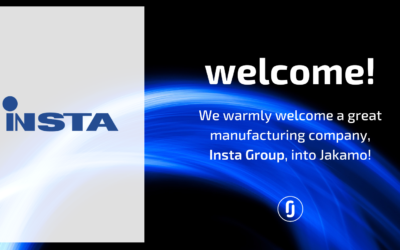How digital solutions can respond to the coronavirus – Lessons learned from the executives

The manufacturing companies and the supply chain professionals around the world have had extraordinary months after the pandemic outbreak started last spring. We interviewed 12 leaders and executives operating in the manufacturing supply chains and asked their insights to how digital solutions can respond to the coronavirus.
Real-time and accurate monitoring
When the exceptional times started and the outbreak of the pandemic was real, the level of uncertainty increased dramatically. Poor delivery control, lack of containers, airfreight availability, component deliveries, financial destress of the suppliers, et cetera. To establish a clear overview and status of your supply network was nearly impossible.
Companies which had implemented digital solutions, such as Jakamo, for supply chain collaboration were able to monitor suppliers and the deliveries digitally without a huge effort of the human workforce. They could avoid the manual chasing with emails and phone calls towards the suppliers.
Especially the single source situations are taking a lot of monitoring time. When the deliveries can be monitored digitally there is more time for staff to monitor for example the suppliers’ financial situations and act faster when they are facing financial distress.
Information sharing and availability globally
In a crisis like this, digital solutions play an important role because companies need to share and update information on a daily basis – sometimes even hourly. Information should be available in real-time wherever an employee needs it. The information needs to be updated frequently and it should be accurate. Sharing the critical data thru an online service has increased the reliability, transparency and visibility of the information.
The significance of real-time information has increased tremendously. If you don’t have it, it’s nearly impossible to allocate the component in the right places and prioritize the deliveries. Personnel should be able to make good and right decisions, but it’s hard if your collaboration tool is email, especially in these times when you need to stand in for your colleagues. An online service has standardized the ways of working and the activities have become familiar for all participants. This improves the efficiency of how the working time is spent which is important especially in exceptional times like we’re living in now.
Managing the engineering changes and changes in deliveries is a challenging task even in a normal business environment. In a crisis, it’s even more important and more challenging. When the hearth of the company – ERP – is connected and integrated with a supplier collaboration tool, such as Jakamo, the change requests are much easier to handle. No need for manual tasks.
Digital gathering
We faced an unusual situation when countries around the world locked down and companies tried to minimize the risk of the pandemic by disallowing social gatherings. In a very short time, all gatherings transformed into digital meetings.
Organizations and teams needed to establish and learn new frameworks for gathering and how to act and communicate during the meetings. For companies which have operated this way earlier, the change was a lot easier compared with the companies which didn’t have experience of digital gathering. Still, my experience is that the not experienced companies survived of this challenge smoothly as well.
Ecosystems help to find second source suppliers
The crisis typically initiates a need to find substitutive suppliers in case the current ones are not able to perform or they simply can’t deliver for the sake of the lockdown. Companies which had established a wide supplier network, including second source suppliers, can send RFQs for the substitutive suppliers. The time is not spent on seeking the suppliers, the time is spent on solving the problem and continuing the operations.
It’s important for purchasers that the second source suppliers are close enough to collaborate intensively when the time is right. Purchasers should be able to share all the needed information immediately and start interaction whenever they need to.
Jarl Matti Anttila
CMO & Co-founder of Jakamo
The blog post was published originally on Friction Free Online Magazine published by Jakamo at 17 AUG 2020.
E-book: Supplier Experience
Supplier Experience – The Fundamentals of Modern Supplier Collaboration is a carefully crafted guide that presents the concept of Supplier Experience through six practical lenses. Download your free copy!
Recent Posts
- Jakamo Business Central ERP Connector Now Available in Microsoft Marketplace
- Insta Group strengthens supplier collaboration and sustainability efforts with Jakamo
- TECHSAVVY MEDIA: Supply chain expert – Relationships with your suppliers are key to greener manufacturing
- Fastems Advances Supply Chain Sustainability with Jakamo
- Jakamo achieves ISO 27001 certification






